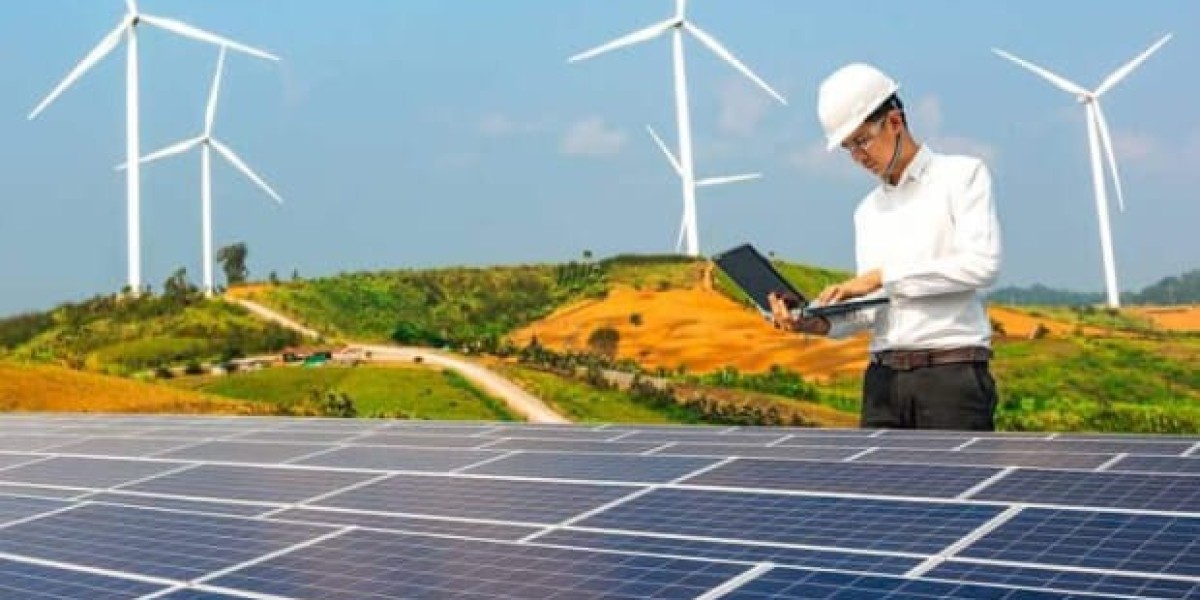Harnessing Wind Energy: A Sustainable Future
In the quest for sustainable energy solutions, harnessing wind energy has emerged as one of the most promising and effective methods. As the world grapples with the consequences of climate change and seeks alternatives to fossil fuels, wind energy presents an environmentally friendly and abundant resource. At Juniper Green Energy, we are committed to advancing wind energy technologies and promoting their adoption for a cleaner, greener future.
Understanding Wind Energy
Wind energy is generated by converting the kinetic energy of wind into mechanical power. This process typically involves the use of wind turbines, which capture wind flow and convert it into electricity. The fundamental principle is simple: as wind passes through the blades of a turbine, it causes them to rotate. This rotational motion drives a generator, producing electrical energy that can be distributed for various uses.
The Science Behind Wind Energy
Wind energy relies on the natural movement of air in our atmosphere, driven by uneven heating from the sun, the Earth’s rotation, and geographical features. As warm air rises, cooler air moves in to replace it, creating wind. The strength and direction of wind can vary significantly, influenced by local topography, weather patterns, and time of year.
Wind turbines are designed to operate efficiently across a range of wind speeds. The most common type, the horizontal-axis wind turbine, has blades that rotate around a horizontal axis, much like a traditional windmill. When the wind speed is too low, the turbine does not produce energy, while excessive wind speeds can trigger safety mechanisms to shut down the turbine to prevent damage.
The Benefits of Wind Energy
1.Renewable Resource: Wind is an inexhaustible resource. Unlike fossil fuels, which can deplete over time, wind energy is sustainable and will continue as long as the sun shines and the earth rotates.
2.Reduced Carbon Emissions: By harnessing wind energy, we can significantly decrease carbon emissions. This shift is crucial in combating climate change and reducing the greenhouse gases that contribute to global warming.
3.Economic Growth: The wind energy sector has the potential to create thousands of jobs in manufacturing, installation, maintenance, and more. This not only boosts local economies but also fosters a skilled workforce in renewable technologies.
4.Energy Independence: By investing in wind energy, countries can reduce their dependence on imported fuels, enhancing their energy security and stabilizing energy prices.
The Process of Harnessing Wind Energy
Site Selection
Successful wind energy projects begin with strategic site selection. Factors such as wind speed, land availability, and proximity to power lines are critical in determining the feasibility of a wind farm. Juniper Green Energy employs advanced meteorological studies to identify locations with optimal wind conditions.
Technology and Infrastructure
Modern wind turbines are engineered for efficiency and durability. At Juniper Green Energy, we utilize state-of-the-art technology that maximizes energy capture while minimizing maintenance costs. The infrastructure supporting wind energy includes roads for turbine access, substations for electricity distribution, and transmission lines to deliver power to the grid.
Environmental Considerations
While wind energy is eco-friendly, it’s essential to assess the environmental impact of wind farms. This includes studying local wildlife, bird migration patterns, and land use. Juniper Green Energy prioritizes sustainable practices, ensuring that our projects coexist harmoniously with nature.
Challenges in Harnessing Wind Energy
Despite its benefits, harnessing wind energy is not without challenges. Some of the primary hurdles include:
1.Intermittency: Wind energy production can be inconsistent due to varying wind speeds. This intermittency necessitates backup energy sources or advanced energy storage solutions to ensure a stable electricity supply.
2.Infrastructure Costs: The initial investment for wind farms can be substantial. However, long-term savings on fuel costs and operational efficiency often outweigh these upfront expenses.
3.Public Perception: Some communities may oppose wind projects due to concerns about noise, aesthetics, and land use. Engaging with local stakeholders and addressing their concerns is vital for successful project implementation.
The Future of Wind Energy
The future of wind energy looks promising. According to the Global Wind Energy Council, wind power capacity is expected to double in the next five years. Technological advancements, such as larger turbines and improved energy storage systems, will further enhance the efficiency of wind energy production.
At Juniper Green Energy, we are committed to leading this transformation. Our vision includes expanding our portfolio of wind energy projects and investing in research to optimize energy production. By collaborating with governments, businesses, and local communities, we aim to create a sustainable energy future that benefits everyone.
Innovative Solutions and Initiatives
1.Hybrid Energy Systems: Combining wind energy with other renewable sources, such as solar power, can provide a more stable and reliable energy supply. Juniper Green Energy is exploring hybrid systems that leverage the strengths of both technologies.
2.Offshore Wind Farms: Offshore wind farms present a significant opportunity for large-scale wind energy production. With stronger and more consistent winds, offshore sites can produce substantial amounts of electricity. Juniper Green Energy is actively researching the feasibility of expanding into offshore wind projects.
3.Smart Grid Integration: Integrating wind energy into smart grid systems can optimize energy distribution and consumption. Smart grids can balance energy loads and store excess energy for later use, making wind energy more reliable.
Harnessing wind energy is a crucial step towards achieving a sustainable and environmentally-friendly energy future. As a leader in this field, Juniper Green Energy is dedicated to advancing wind energy technologies, addressing challenges, and promoting community engagement. By embracing wind energy, we can create a cleaner, greener planet for future generations.
As we move forward, the collective efforts of businesses, governments, and individuals will play a vital role in shaping the landscape of renewable energy. Together, we can harness the power of the wind and make significant strides towards a sustainable future.

.jpg)


.jpg)
.jpg)
.jpg)










